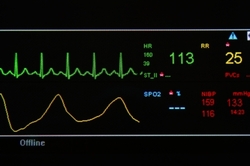
Okay, so that is the headline grabbing story that every trial author wants from a trial, but it certainly whets the appetite for the details of the study (just me?). But enough of that sideshow and on to the real topic of this post. ‘Nitrous Oxide-related Postoperative Nausea and Vomiting Depends on Duration of Exposure’ is the title of the paper published in this months Anesthesiology journal, and you can probably see why the title caught my eye.
What's It About?
For me this seemed one of those points that is very obvious retrospectively, and yet it is clear this hasn’t been explored much in the way of big data. It also seems very clinically relevant. In our first post on nitrous we had a look at balancing the pros and cons of it as a drug, and therefore targeting its use rather than having a blanket everyone or no-one approach to its use. Having a better understanding of nitrous’ side effect profile would really help with this. If short term use doesn’t induce PONV, then this swings the balance of pros vs cons for nitrous as a component of the anaesthetic in short procedures (I’m thinking of I&D of abscesses and arthroscopies).
What Did They Find?
They used these results to calculate some clinically useful numbers. They defined a clinically significant increase in PONV as a 10% increase in incidence, and calculated that this point was reached at 75 mins of exposure (i.e. the RR was 1.1 at this time). The gradient of the relationship suggested that the risk of PONV increased by 20% for every hour of nitrous exposure after 45 minutes. This gives a number needed to treat (NNT) to prevent PONV by avoiding nitrous of 128 for exposure of under an hour, 24 for duration of 1-2 hours, and 9 for duration of over 2 hours. Fascinating results.
However, they also found substantial heterogeneity amongst the studies they were drawing upon for their data, and a look at the bubble plot of these studies shows this clearly. Their I^2 test confirmed this with a value of 66.8% (values over 50% showing significant heterogeneity).
Is It Any Good?
The main down side seems to be that of most meta-analyses which is that it is only as good as the studies that it is based on. The inclusion criteria appeared pretty fair, with the odd drawback such as English language only, but there was no analysis of the quality of the studies being included other than a statistical analysis of the heterogeneity (which you can guess from the 2 graphs without any fancy stats). I’m not quite ready to look through these studies individually so it will remain a bit of an unknown quantity.
Final Thoughts
Going back to our review of nitrous as a drug with pros and cons, this study adds some nice extra information. To me its seems the evidence is against nitrous causing any significant PONV with short term use. I feel more comfortable now using nitrous in cases where it's advantageous characteristics can be brought into play, without excessively worrying about adding to the risk PONV (a pretty unpleasant side effect). Short cases where there is intense intra operative stimulation but little post-op pain seem perfectly suited to the extra stability that nitrous can provide, and these cases are where I still see a strong role for it. Now it's just a case of waiting to read about ENIGMA II.
Thanks for reading and, as always, please let me know your thoughts on the topic, particularly with which cases you find nitrous to be well suited.
Tom Heaton
 RSS Feed
RSS Feed
